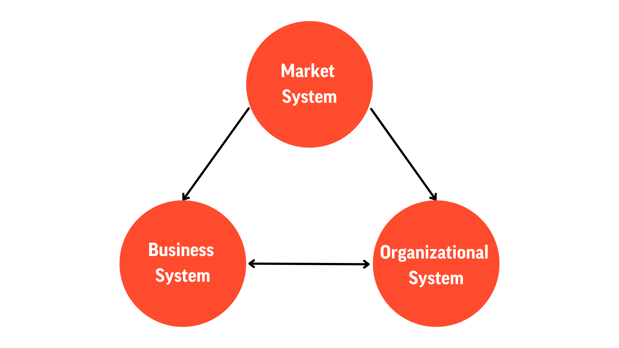What is a Strategic Alignment Model?
.png)
The Strategic Alignment Model (SAM) was developed by Henderson and Venkatraman in the 1990’s and has since been widely adopted across the international business community.
The purpose of Strategic Alignment Model
SAM aligns an organization’s business strategy with its relevant component parts and its ability to deliver on that strategy - strategic fit and functional integration.
When all central elements are intersecting and aligning as they should, then a properly defined strategy can be executed efficiently and with room to evolve and manoeuvre as external aspects are factored in.
A concise definition of strategy is a course of action to achieve a specific goal. But as TIAS Professor of Strategic Leadership Ron Meyer points out, we don’t have limitless resources to apply to strategy and achieve our aims. Therefore we have to identify the best ways, methods and resources that we do have, and then build a strategy with the tools at our disposal to deliver the best chance of success.
Meyer states that this holds true whatever the levels of aggregation and scale - individuals, teams, companies, regions, countries or the world!
The Strategic Alignment Model according to Ron Meyer comprises of three elements that are pertinent to the development, execution and success of a business strategy; Market System, Business System and Organizational System - each one with its own interior components working like an organism for the whole ‘body’. All the variables working in sync and harmony and when changes might occur in one area, the wider body adopts and adapts to keep moving forwards to the strategy's end goal.
These are the 3 main elements for a successful SAM:
A) Market System
This is where all aspects of buyer and seller interaction occur. Which segment of buyers to concentrate on? A question often summed up with, ‘Where to play?’ Every buyer segment will have its own requirements, rival and suppliers, so it is key to identify where you can reach productively, efficiently and effectively - this is Market Positioning.
B) The Business System
This is the means by which you develop and provide something that buyers will require and value. What you input with your resources must translate into attractive output. Ron Meyer breaks these down into three subsections:
1. Value Proposition: Every aspect of the product or service that makes it enticing such as value, information, reputation and payment options.
2. Activity System: Creating the value proposition and ensuring it is known and understood. Falling under this umbrella are promotions, marketing and sales but also a wider array of activities and roles such as HR, R&D, manufacturing, finance, IT and procurement.
3. Resource Base: Buildings, machines, material and money are the tangible resources behind an operation, but the intangibles such as knowledge, skills, relationships, contacts and reputation are vital. Configuring these resources in a business model to build a proposition that sets you apart from rivals with revenues appreciably higher than costs, this is not just how to play? But how to win!
C) The Organizational System
This is made up of a group of people with assigned tasks working in their particular roles but also developing a productive synergy between them. Crucial positive culture will also develop here as a good organizational system comprises of individuals knowing their specific roles but simultaneously unifying as a collective whole.

The four components of Strategic Alignment Models:
I) Business Strategy - This defines the objectives and competitive positioning in the marketplace. It outlines the company’s long-term vision and route towards its goals and includes product/service offerings, positioning and revenue streams.
II) IT Strategy - It is crucial that IT strategy aligns with business strategy and they work ‘hand in glove’. This defines how the organization uses IT to achieve business goals and includes decisions about IT management, infrastructure, applications and systems as well as outlining the technology capabilities required to implement the strategy.
III) Organizational infrastructure - This is about the organizations structure, culture and processes and provides the foundation for the implementation of the business and IT strategies. Clearly it must be aligned to the business and IT strategies and provide the necessary resources and support for them. The organizational culture herein should also support the strategies and be conducive to innovation, collaboration and ongoing improvement.
IV) IT Infrastructure - This includes all matters pertaining to a company’s hardware, software, and support systems. It provides the foundation for the implementation of the IT strategy and must be aligned with it, providing the necessary capabilities to support strategy implementation. It should be secure, scalable and flexible to react to and support changes in the business environment
As with the Meyer example, these are individual pillars that need to be developed and refined in their own right but they can only attain full function and purpose when ‘playing’ with the others. In much the same way an orchestra is made up of woodwind, strings, brass and percussion, but it only achieves full power when all work together in tune and in time.
Strategic Alignment Model enables organizations to improve operations and communication, increase competitiveness and achieve objectives with clarity and efficiency. With DecideAct, you have the overview of the alignment of your organization. See for yourself!



.png?width=596&name=Responsible%20Ownership%20(1).png)


.png?width=596&name=Ownership%20Strategy%20(1).png)



.png?width=80&name=USED%20(1).png)